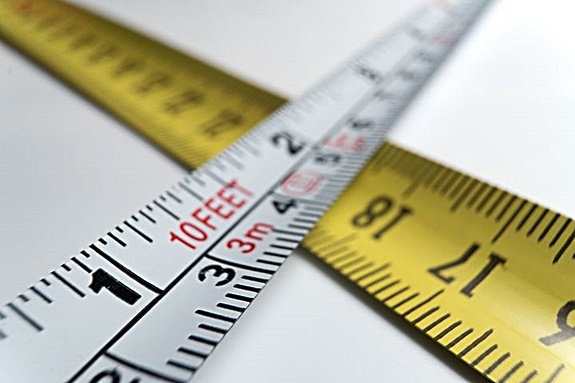Giving blood is vital as it saves millions of lives every year. If you donate your blood to organizations like the American Red Cross, then you can rest easy knowing that your donation might have saved up to three lives. We expect most people are familiar with how donating blood works but are you aware of how blood donations affect your body?
The good news is that you’ll experience little pain and very few side effects, but there are many real positives for you. Several scientific studies suggest that donating blood can increase how long you live. Other benefits also include weight loss, enhanced cardiovascular health, decreased chance of cancer, and many more.
Before deciding to give blood, you might be interested in learning about what donating blood can do to your body in further depth. In that case, everything you need to know can be found in this in-depth guide.
[su_list icon=”icon: check-circle”]
What Are the Side Effects of Donating Blood?
For the most part, voluntary donors tolerate blood donations easily.
However, some people experience “adverse reactions” including:
- Bruising
- Continued bleeding
- Dizziness, lightheadedness, and nausea
- Pain
- Physical weakness
- Vomiting
- Fainting
Studies as to why these side effects occur are inconclusive, but common sense will tell you that you will naturally feel different after losing a pint of blood. A study conducted by Crocco in 2005 was conducted to estimate the plausibility of incurring side effects and attempted to determine the reason.
Of the 4,906 donors were analyzed, only 63 volunteers experienced a side effect. To put things in perspective, around 1.08% of the subjects experienced mild side effects (weakness, nausea, swelling, etc.) and approximately 0.02% of the subjects experienced severe side effects (vomiting and fainting.)

Few people will experience side effects. Giving blood still affects your body. If you are contemplating giving blood, there are several things to consider to reduce the risks.
What Happens to Your Body When You Donate Blood?
To donate blood, you must be a registered donor. This requires your complete medical history, a mini-physical examination, and test to ensure you have blood that is safe to donate.
In the U.S., you’re able to begin the process online through portals like the American Association for Clinical Chemistry. The organization will test your blood for blood type and purity. As for the mini-physical exam, think of it as a sort of bonus. After all, the exam is performed to make sure you are a sound candidate that is free of specific health concerns.
The donation is the most straightforward aspect. A donor’s arm is cleaned, prepped, and inserted with a small needle connected to a collection tube and bag. Blood is collected until the bag is full, which is almost a pint. According to the American Red Cross, the process of giving blood takes only 8-10 minutes. If the donor is donating platelets or plasma, the session can last as much as 2 hours.
Once you have given blood, you will be asked to sit quietly for around 10-15 minutes and will be offered food and refreshments. This is a standard protocol to ensure donors do not experience any adverse side effects.
But what’s going on inside of your body?
1) Red Blood Cells
Donating blood leads to a loss of red blood cells. Red blood cells are important to help your body function correctly.
There are a couple of critical components to consider here. It’s not just regular blood cells that need to be replenished. Replenishing the general volume of the blood usually takes up to 1-2 days. In fact, your body can make about 2 million new red blood cells per second.
However, the other elements can take up to eight to twelve weeks to fully replenish. Such elements include white cells, platelets, and even special red blood cells produced in the bone marrow (which take longer to produce as they follow a separate production process.)
2) Hemoglobin Levels
These are the red proteins in charge of making sure your body is getting the oxygen you need.
One of the many preliminary checks pre-donation includes a hemoglobin level check. The World Health Organization set up what they call a “cut-off” level wherein hemoglobin levels must exceed 12.5g/l for women and 13.0g/l for men.
Low hemoglobin levels hint at possible anemia. This means, the donor’s body will not be able to replenish blood cells quickly and might lead to increased risk of side effects. These are often related to the next element — the donor’s iron levels.
3) Iron Levels
If a donor has an iron deficiency, then your body will have a difficult time replenishing the healthy red blood cells that carry oxygen throughout the body.
Screening for a blood test will help you determine if you are anemic. The best way to recover from a donation (or to be able to donate) is to stock up on iron. This can be done through normal dietary changes or by taking iron supplements.
In fact, a study funded by the National Institution of health recently discovered that supplementing iron after donating can help shorten the recovery of one’s hemoglobin levels. In this study, recovery time was cut about 25-35 percent.
4) Hydration
Something else that the donor must consider is how hydrated your body is. Around 55% of blood is made of plasma, and 90% of that is water. In that sense, hydrating yourself after a donation will ensure that your body can replace the fluids needed to replenish the bulk of the blood volume lost.
What Are the Health Benefits of Donating Blood?
Donating blood is not all that different from volunteer work, and you can feel good about yourself for saving a life. This is due to benefits regarding the donor’s emotional and physical health, which, as reported by the Mental Health Foundation, can ease the following:
- Stress
- Negative feelings
- Isolation
- Emotional well-being
Of course, these benefits are not only in the mind. As briefly mentioned above, scientific research has discovered some surprising physical benefits for people that donate blood experience.
1) Free Medical Checkup
One of the most foremost benefits is the free health checkup requisite required before donation. For this, the medical team will study your pulse, blood pressure, body temperature, and hemoglobin levels to make sure that your body can withstand losing the amount of blood required for a full transfusion.
This checkup is useful for uncovering possible health problems and diseases you might have. Diseases like Hepatitis B and C, HIV, Chronic fatigue syndrome and Syphilis prevent your blood from being transfused.
It should be noted that a medical check-up is not as thorough as a general checkup by your doctor, but you’ll be able to keep track of your body’s current status which can give you peace of mind.
2) Lowers Risk of Heart Disease
Another significant benefit is the opportunity to lower the risk of potential heart diseases, or even an impending heart attack.
Some studies suggest donating blood can decrease your chances of a heart attack by at least 88%. Other studies, like one conducted in 2013, found that donors who regularly donated blood benefited from lowered cholesterol. This is consistent with enhancing cardiovascular health.
3) Lowers Risk of Cancer
Although not as present as the other two, the reduced risk of cancer is another strong benefit linked to the donation of blood. This is connected to the reduction of iron in the body, which has been said to reduce the risk of cancers. Including liver, colon, lung, stomach, and esophagus cancer.
This reduced risk, as reported from a study by Oxford Academic conducted in 2008, is small. However, the results are replicable in other studies concerning the circulatory process.
4) Healthy Liver
Liver problems are a common danger related to an overload of iron in your blood. This has been said to result in conditions like the Non-Alcoholic Fatty Liver Disease (NAFLD), Hepatitis C, and other problems and infections related to the liver.
5) Reduces Harmful Iron Stores
Many of the critical benefits of giving blood are linked to the reduction of iron in the body. This is due to a condition called hemochromatosis, which is the buildup of iron. It’s a genetic disease commonly found in Caucasians.
Although it might not sound all that bad, excess iron can lead to severe conditions, including increased risk of heart disease, liver disease, and cancer.
What’s the Recovery Time After Donating Blood?
In the United States, the recommended recovery time is a mere eight weeks. But this is not the same all over the world. For example, if you’re donating from the UK, you get double that amount of time – it’s recommended you only give blood in 12-16-week intervals.
Why’s there such a large discrepancy between recovery times? The experts are trying to figure that out as well. For example, to determine whether or not the UK standard is worth following, researcher Edward Murphy embarked on a study that analyzed the “gaps” in international transfusion standards.

The study was conducted for over two years and had a subject pool of about 45,000 blood donors. Recovery periods were different for men and women, with some subjects getting up to 12 weeks and other only 8. By the end, over a quarter of the regular donors reported having experienced side-effects and were confirmed to have developed iron deficiency.
However, despite such findings, the research team reported their results to suggest that frequent donations, like the ones seen in America (with up to 8 weeks of recovery) are acceptable. A sensible approach has to be taken by donors. If you don’t feel comfortable with shorter recovery times, or experience side effects after donating blood, leave a significant time lapse between donations.
Is It Possible to Recover Faster?
To add to that, we must bring back the subject of iron deficiency. As mentioned previously, blood donation can lead to decreased levels of iron in the body. Such a condition can lead to you growing weak and developing anemia.
As such, you will not be able to donate blood if your iron stores are significantly reduced. Each transfusion will take away at least 200-250 milligrams of iron. Which, unlike blood volume (replenishable in about 1-2 days), can take up to 6 months to recover completely.
How Often Should You Donate Blood?
The number of times you should donate in a given year is dependent on how quickly your body can recover from the loss of blood and other vital elements. A pint of blood is what you’re giving, but as mentioned, that comes with the price of 200-250 milligrams of iron.
For you to be able to donate blood more often, you’re going to have to replenish those stores faster. This can be done and has been proven to work by either making small dietary changes or by supplementing your depleted stores with an iron pill.
The latter (as was mentioned previously), can reduce the recovery period by about 25-35 percent. As an average, it takes six months to recover the iron depleted from a single donation. With a regularly supplemented iron pill, you can cut that period to around 90 days.
If you donate blood within that time frame without taking supplementing iron, you should expect an increased risk of side effects and the potential risk of anemia (from iron deficiency.) In that case, most donors are recommended to give blood only two to three times per year. However, if a donor were to address the state of their iron levels, things could be different. Then it should be feasible for that donor to, theoretically, give blood six or even seven times a year.
Of course, in the end, it’s always best that donors talk to the blood bank you are associated with. You need to be assured that the frequency they want you to donate matches what your body can handle.
How Fast Does Blood Regenerate?
Most transfusions ask for only a single pint of blood. In fact, a lot of blood banks tend to go lower than that. That adds up to about 13% of your body weight. Although the chances of this happening are slim, it will drop your blood pressure enough to set off a chain reaction in your body that will leave you feeling ill.
After donating, patients are usually asked to stay for observation. This is to keep the donor from experiencing a drastic decrease in blood pressure which generally makes you feel faint.
Usually, the donor is asked to lay down for at least 10-15 minutes. Certain blood banks also recommend that the donor leave their feet hanging over the edge of their seat for at least two minutes (to allow the pressure to reach the feet) before standing. In some cases, when the donor reports to feeling too faint, this recovery period might be extended further.
An average person makes about two million red blood cells per second. So, volume-wise, it doesn’t take all that long to regenerate “blood.” It’s the more finicky elements like white blood cells and platelets that take longer to produce.
It’s been reported that most donors regenerate blood volume after 24-48 hours. Other donors take longer due to specific elements, although for the most part, these elements are addressed before donating blood which includes the availability of:
- Hemoglobin, which is tasked with transporting oxygen to the body
- Iron stores, which is related to the production of healthy hemoglobin
- Liquid, which is required for producing new red blood cells.
Blood regenerates pretty quickly. Drinking more water speeds up the process. It’s also important to make sure you’re getting enough iron in your diet and that your body is properly hydrated and able to produce red blood cells.
What To Eat After a Blood Donation
As a rule, there are certain things that a donor should eat after donating blood. The basics to consider immediately after a donation is a light snack and something to drink. This will be provided for the donors as soon as their blood has been taken.
For the 24 hours following a blood donation, it’s recommended that you eat something that is high in iron, get some rest, and to hydrate yourself. As for long-term recuperation, consider increasing the amount of the following in your diet:
Iron
Iron is an essential mineral that is linked to the production of hemoglobin. Without hemoglobin, the quality of oxygen flow in your body will be significantly reduced. To make sure you’re able to replenish all the iron that your body needs to recover fully, you should consider adding iron-rich foods to your diet.
If you’re looking for a quick fix (something to eat immediately after having used up your iron stores), you should eat foods that are rich in heme iron. Heme iron is a fast-absorbing type of iron that will allow you to boost your iron levels immediately.
Examples of food rich in heme iron include the following:
- Meat (beef, lamb, pork, veal, etc.)
- Fish and Shellfish
- Liver
- Eggs
On the other hand, you should also consider some nonheme iron-rich foods. Although not as easily absorbed as the heme variety, they can still help you restore your iron reserves. Examples of food rich in nonheme iron include things like vegetables, bread and cereals, fruits, and beans.
You can increase your body’s ability to absorb nonheme iron foods by taking in some extra vitamin C. This can be done by eating fruits like oranges (and other types of citrus fruits), cantaloupes, mangoes, pineapples, kiwi fruits, papaya, etc.

To make sure that your iron levels are high, you should also avoid things like caffeine, chocolate, cheese, milk, and red wine. All of which are known as “iron blockers.”
Water
A large part of the blood that you’re donating is water. This loss of fluids can lead to blood pressure drops which ultimately result in fainting or dizzy spells. It’s recommended that you drink about 11-15 cups of water in the 24 hours before and after donating blood.
It needn’t be water all the time. Just make sure to avoid drinking alcohol before and after the first 24 hours. As doing this has been said to lead to dehydration.
Does Donating Blood Make You Gain Weight?
As strange as it might sound, there is a common myth that donating blood will make you gain weight. In fact, the opposite is true – giving blood can help you lose weight. In a statement from the University of California, it was suggested that a donor could lose up to 650 calories with each pint of blood donated. That’s a significant number of calories to burn in one go.
To put that into perspective, an average person burns up to 100 calories per mile by doing a rigorous run. So, to get the same benefits, not only will you have to run every mile at around 10 minutes, but you will also have to do it a total of 6 or 7 times.
Of course, there are limitations as to how many calories you’ll be able to burn considering the health requirements and the long recovery period times. Let’s put it this way, giving blood is the furthest thing from a weight loss solution, but you can rest assured that it won’t make you gain weight.
Blood donors are in high demand all around the world. Simply put, giving blood saves lives. The process today is also so well regulated, there is absolutely nothing to worry about other than a little bruising around the injection and perhaps slight light-headedness. If you are contemplating giving blood, make sure you follow the recommended recovery times and best-practices. You will be just fine.
[/su_list]



